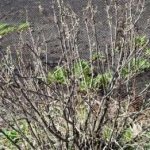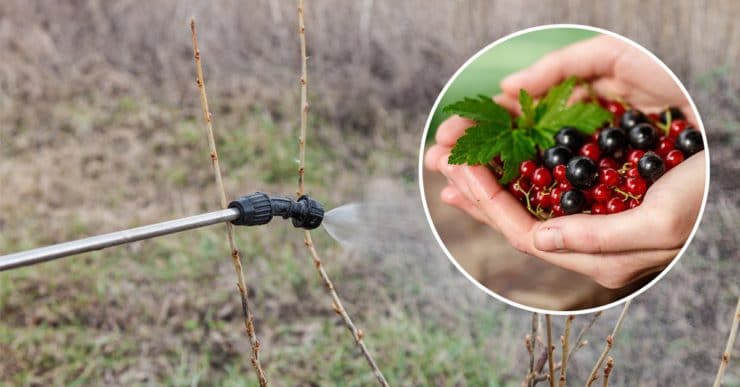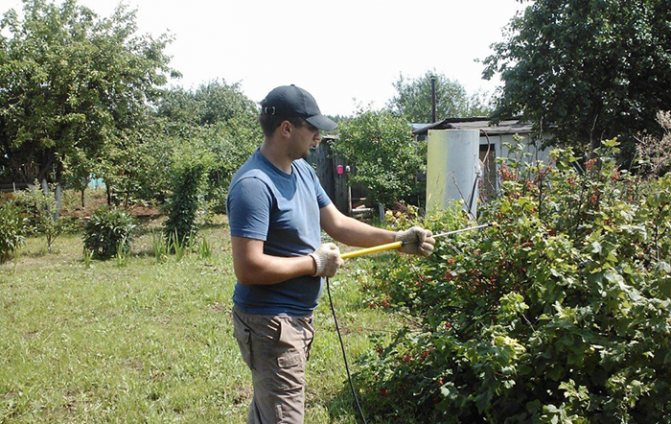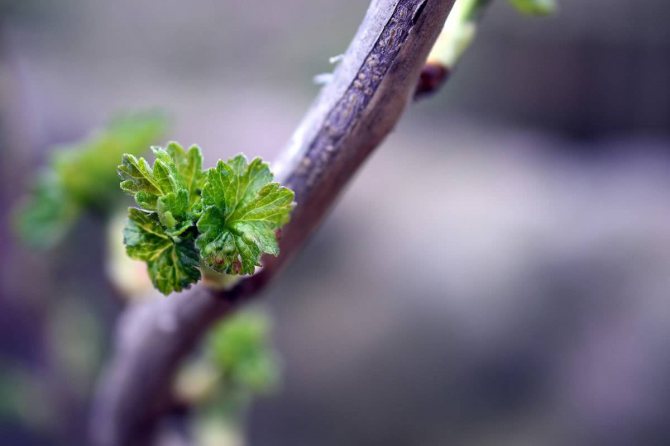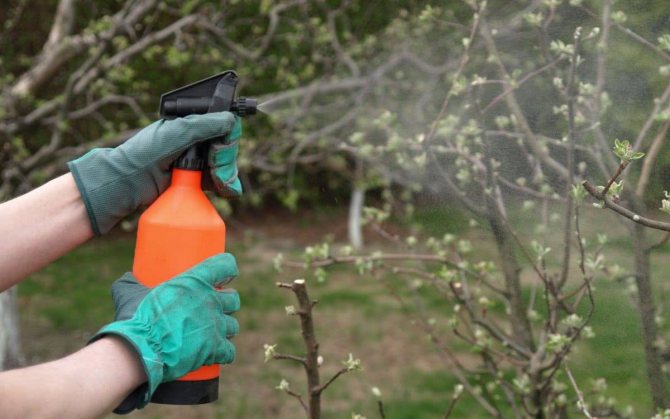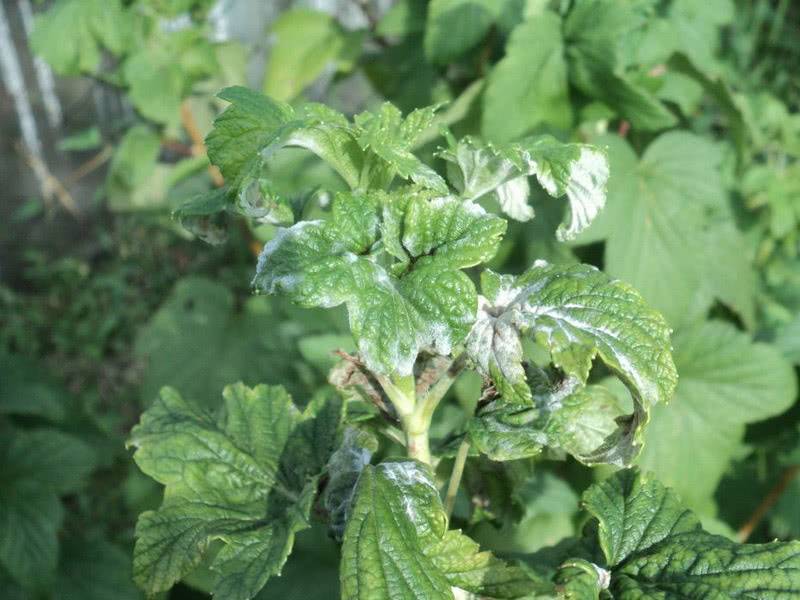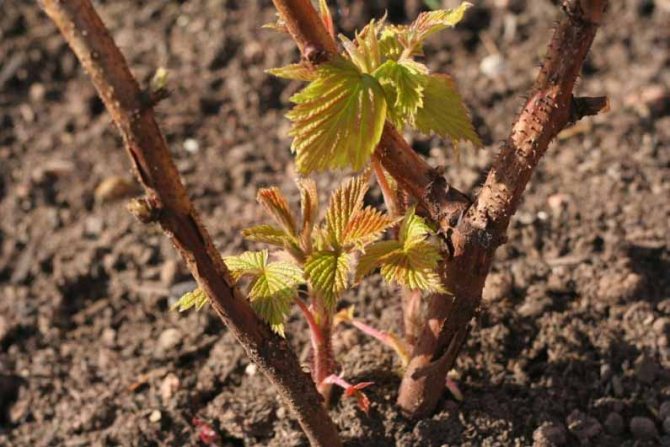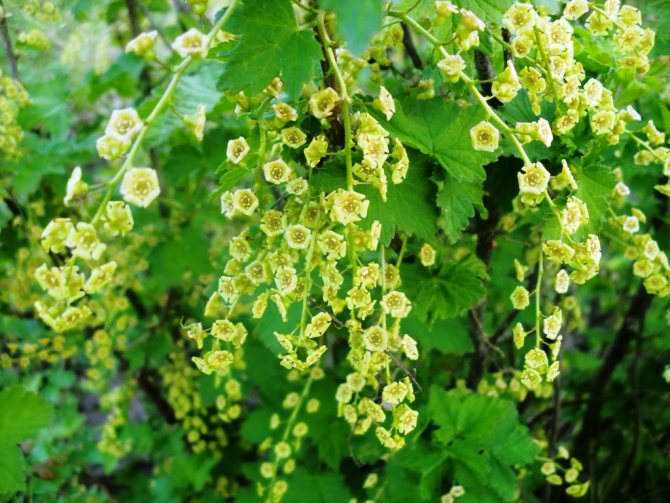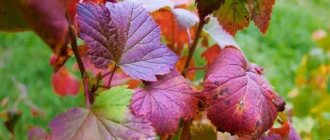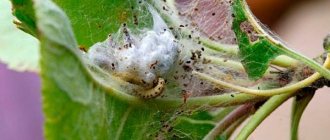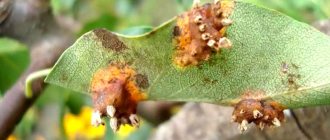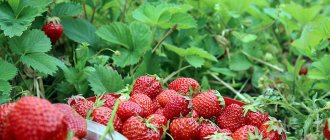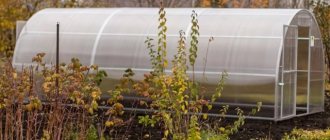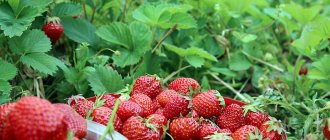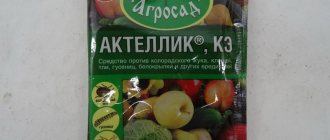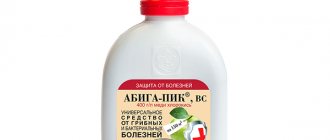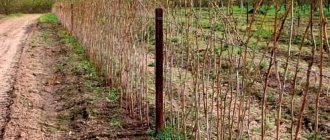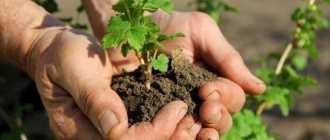For gardeners, spring begins with a thorough inspection of the property. The primary task is to identify frozen parts of trees and shrubs, diseases and pests. Immediately after this, an active fight against possible problems follows. Today on the site for farmers you will find out how currant processing in spring from diseases and pests.
Gardener's work plan in spring:
1. Treatment with boiling water. 2. Spraying of currants from diseases and pests. 3. Currant care in spring: soil treatment, pruning, fertilization. 4. Inspection of bushes and additional processing if necessary.
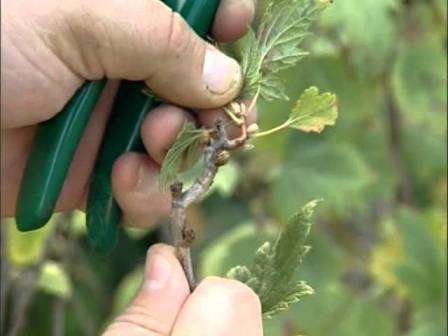
Why spring treatment?
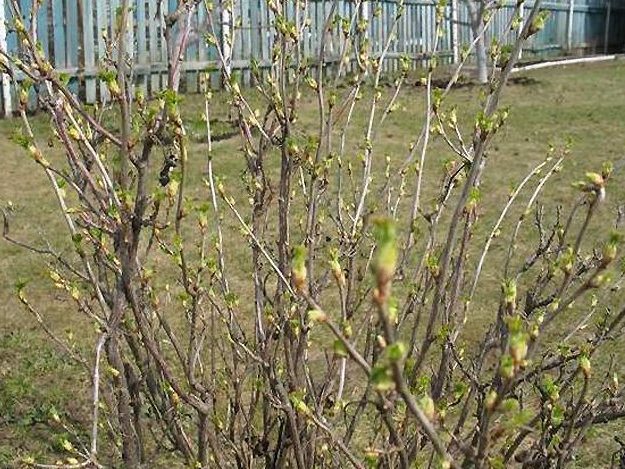

Spring currant
A healthy, timely processed currant bush will give a rich harvest of delicious berries in the summer. It can be eaten fresh or prepared and enjoyed during the winter. However, this requires work.
Together with trees and shrubs, fungi, various pests and plant diseases also awaken in spring. To avoid this, you need to carry out chemical spraying of the bush at a certain time. But first you need to determine which disease or pests affect the currant bush most often.
When is the treatment carried out?
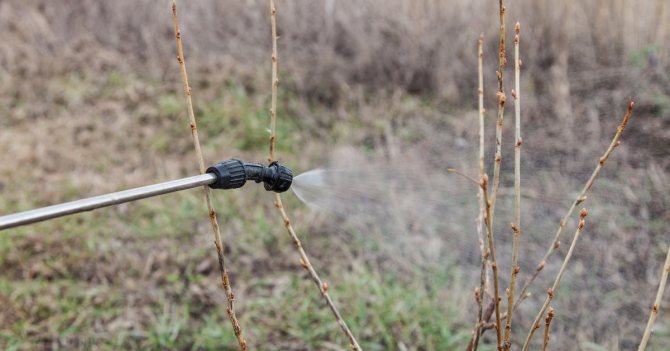

Primary processing of the currant bush
Knowledgeable gardeners and experienced agronomists advise processing currants in spring in two stages. This is necessary in order to exclude the possibility of infection with plant diseases and the activation of pests that can harm the bush and the upcoming harvest.
The processing steps are as follows:
- primary spraying (carried out until the buds appear in the bush, aimed at getting rid of wintering pests and diseases, the ideal time is late March - early April, or rather, the gardener determines himself, depending on weather conditions);
- secondary spraying (done at a time when the buds of the black currant bush begin to open, active protection against awakened pests and some types of diseases, mainly the second spraying is carried out in the first ten days of April, but the gardener must determine the time himself in accordance with the weather conditions in a particular region).
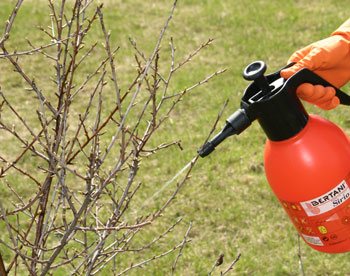

Secondary processing of currant bush in spring
It is not too late to process currants in the spring from pests and during the budding period... This will protect the plant from harmful insects and various diseases that can ruin the berry harvest.
Processing currants in spring with boiling water: technology, advice
After the process of destroying dead leaves and branches, it is necessary to strike at the pests. After all, it is they who are most often the cause of the disease of the bush. Moreover, most insects do not die during the frost period, which means that with the onset of spring their population will rapidly increase. In order to prevent their reproduction, it is worth using one of the most popular ways of processing currants - using boiling water.
This process is carried out at the beginning of March, following the following instructions:
- Before the buds open and swell, the plant is examined.
- A large number of cocoons at the ends of branches, as well as multiple processes, indicates the presence of bud mites (harmful insects).
- It is necessary to scald the bush with steep boiling water from all sides, starting from the top.
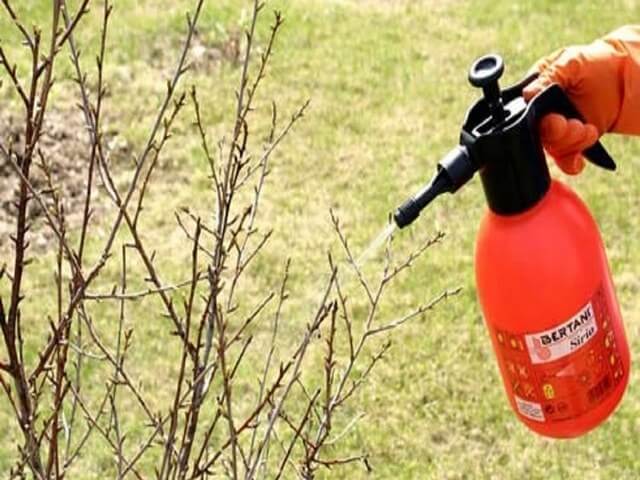

Scalding with boiling water
- With a large number of cocoons, it is recommended to repeat the procedure over the next 2-3 days.
- We also advise you to dig up and burn the currants in the event that in early spring you find a massive settlement of aphid larvae or huge buds.
- In this case, it is necessary to carefully examine the neighboring plants and scald them with boiling water for prevention.
Spring care rules
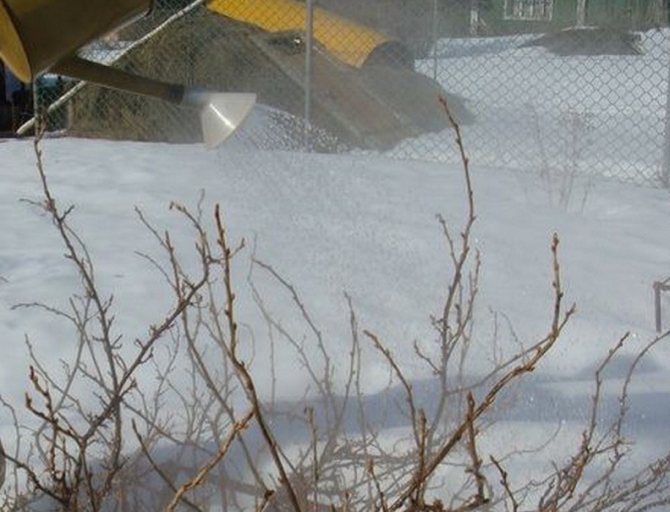

Processing currants with boiling water
Spring is the time of transformation of all living things. In order for the bushes on the garden plot to bring a large harvest of berries, you need to properly process them and provide them with timely support in the form of spraying with special preparations against diseases and pests.
The plan of activities for the spring includes:
- primary treatment with boiled water;
- spraying with chemical compounds from infection with diseases and various pests;
- the necessary care, in particular, pruning dried branches, loosening, processing the soil under the bush;
- a thorough examination of the bush and additional processing, if required.
Not all gardeners appreciate the simple form of processing a bush in early spring with boiling water. This method is good, for example, in the fight against aphids. Therefore, if last season this pest attacked a black currant bush, it is better to carry out such a simple treatment and live in peace, waiting for the harvest.
It is important to carry out the processing correctly. Boiling water will not harm the bush only if the buds are still dormant, before the snow melts. After boiling a large amount of clean water, you need to pour water into the watering can. Having previously tied up the bushes, they are watered with boiling water.
Experts also recommend processing currants in the spring against diseases and pests that survived the winter. Experienced gardeners and gardeners note that many pests and larvae are able to survive even on the coldest winter days. That is why preventive spraying is carried out in the spring without fail, so as not to lose the crop.
Processing is carried out twice, with a break of a couple of weeks, if the currants were damaged by pests last season, or once, if its condition is good and no diseases are expected. Spraying products can be purchased at specialty stores.
Why black currants are processed
Most insects harmful to the bush successfully survive the winter in the soil or on the branches of the plant. With the arrival of spring, they leave their shelters, actively reproduce and, getting hungry, quickly destroy young shoots and leaves. In this case, there is no need to hope for a harvest.
The currant is a durable shrub, but it can also be damaged by fungal or bacterial damage to branches, roots or leaves. The fight against diseases and their prevention is an important spring event for the summer resident.
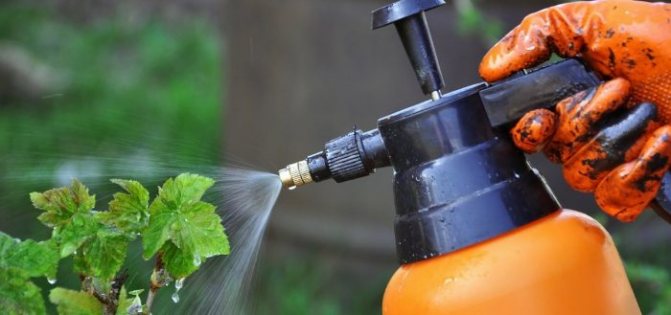

Currant processing
In addition, it is also worth processing them in order to give the plant more natural strength. After the end of winter, damaged and dry twigs are often visible on the bushes. They only burden the currants, cast a shadow and can become a habitat for many parasites. Regular sanitary pruning is part of the proper maintenance of this fruit bush.
What diseases and pests threaten currants?
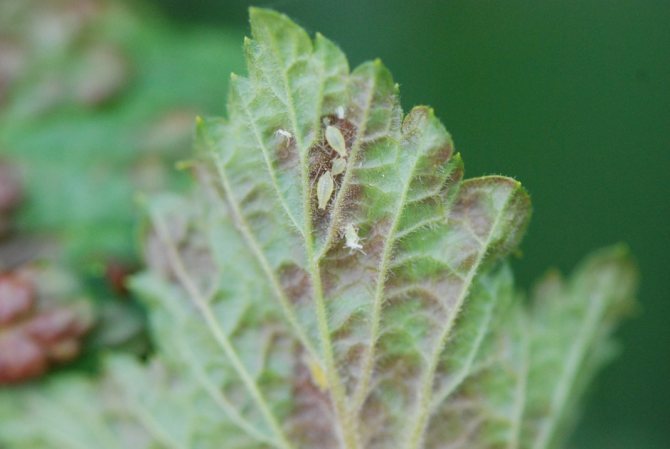

Aphids on currant leaves
Early spring treatments are carried out in order to rid the plant of pests that were able to survive the frosts and became more active in the spring. They can provoke the development of diseases, complete loss of crops and even the gradual death of the bush.
The most dangerous pests include:
- shield;
- different types of ticks;
- aphids;
- honeydew;
- leaflet.
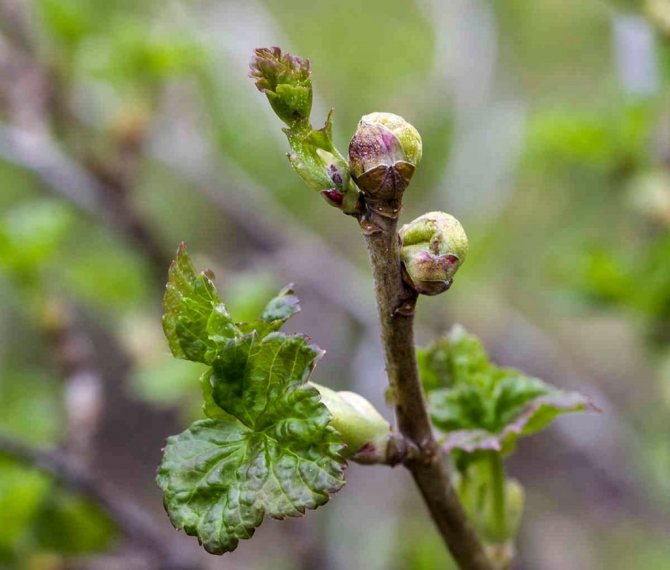

Kidney mite on black currant
Ticks are one of the most dangerous pests for currants.They carry incurable diseases that destroy the bush and deprive the grower of lovingly grown crops. There are several types of mites that are capable of infecting currant bushes.
How to treat fungus on currants
Fungal diseases are considered the most common in most horticultural crops. This is due to the fact that fungal spores are easily spread by insects, and can also get to healthy plants through weeds, air, water, or untreated garden tools.
Consider the most dangerous and common fungal diseases of black currant - anthracnose and powdery mildew, and also dwell on their symptoms and treatment in more detail (Figure 4).
The reasons
The rust pathogen spreads through the air and can enter shrubs from conifers or sedges growing near a body of water.
Powdery mildew spores also spread through the air, but can enter the soil around shrubs through contaminated water or mulch. Both diseases develop faster in warm and humid summer weather.
Symptoms
Each fungal disease has its own characteristic symptoms. For example, rust is accompanied by the formation of orange bumps or spots on the leaves and young shoots. To combat, spraying with one percent Bordeaux liquid is used and the treatment is repeated four times with an interval of 10 days.


Figure 4. Symptoms of fungal diseases: rust and powdery mildew
Powdery mildew also has characteristic symptoms: shoots and leaves are covered with a white bloom, which, as the fungus develops, spreads to branches and berries. To combat powdery mildew, spraying with Bordeaux liquid or one percent solution of copper sulfate is carried out.
Disease Prevention Drugs
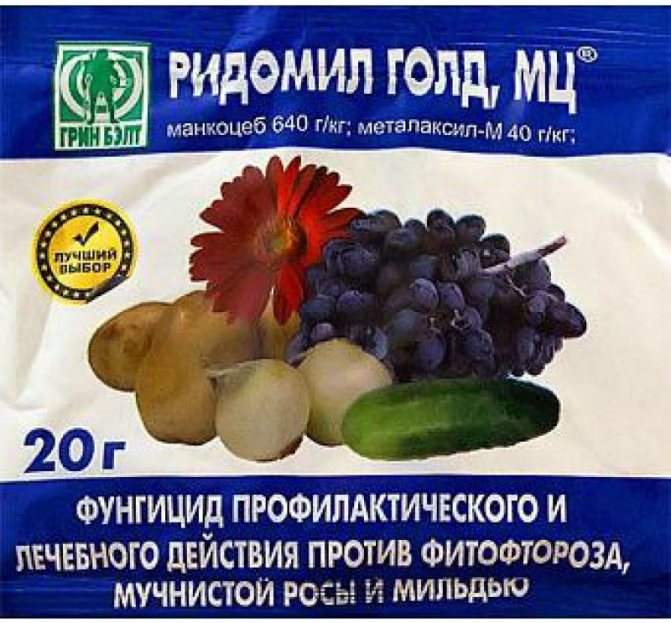

Currants are susceptible to many diseases and various pests. But this does not mean that getting rid of each requires the purchase of a separate drug. It is enough to buy, study a simple classification and choose a suitable tool.
Preparations for processing currants in spring and summer are divided into 3 types:
- fungicides (these include the Bordeaux mixture, Ridomil, HOM, Skor, Arcerid and others, which are extremely effective in combating fungal diseases, in addition, each of the drugs is universal and capable of destroying all existing fungi);
- insecticides (they are of great benefit in the fight against harmful insects, these are chemicals that kill pests with the poisons that make up the composition, but they are absolutely inactive against ticks, with the exception of universal insecticides, for example, Karbofos, which kills everything harmful on the surface of the bush);
- acaricides (The most recognized by gardeners drugs from this group are Aktelik and Aktara, they are popular for tick diseases, are as versatile as possible, they kill ticks and other harmful insects).
Gardeners who have been successfully cultivating their garden for more than one season, note that such a huge amount of funds is not necessary to use. It is enough to purchase a universal fungicide and treat all fruit crops on the site with it. This will help reduce wasted time and money, as well as protect crops from the harmful effects of pesticides.
Popular substances
In stores, you can find a huge number of products, both new and universal, and time-tested. Each gardener must choose the product that suits his liking.
Among the most popular in use are:
- inkstone;
- urea;
- copper sulfate;
- nitraphene;
- preparation 30;
- Bordeaux mixture.
Each of the mixtures presented gives good results when treating a bush from pests. The main thing is to choose the right remedy, or give preference to a universal substance that can overcome all pests that cause plant diseases.
inkstone
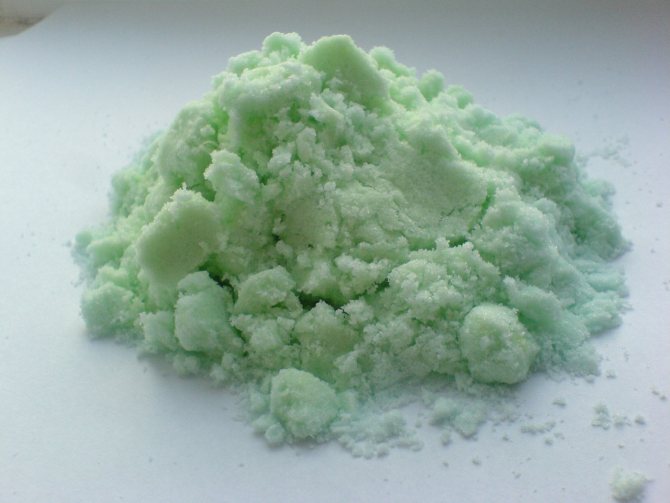

The second name of the substance is iron sulfate. The maximum acidity of the product has a negative effect on pests, causing them chemical burns. Aggressive impact can negatively affect the bush itself, therefore, currant processing in spring and autumn is carried out only at a time when there are no leaves on the bush.
The solution must be mixed strictly in accordance with the instructions on the back of the package. It is necessary to process not only all the branches and buds, carefully sprinkling everything around, but also the soil at the base of the bush.
Urea and copper sulfate
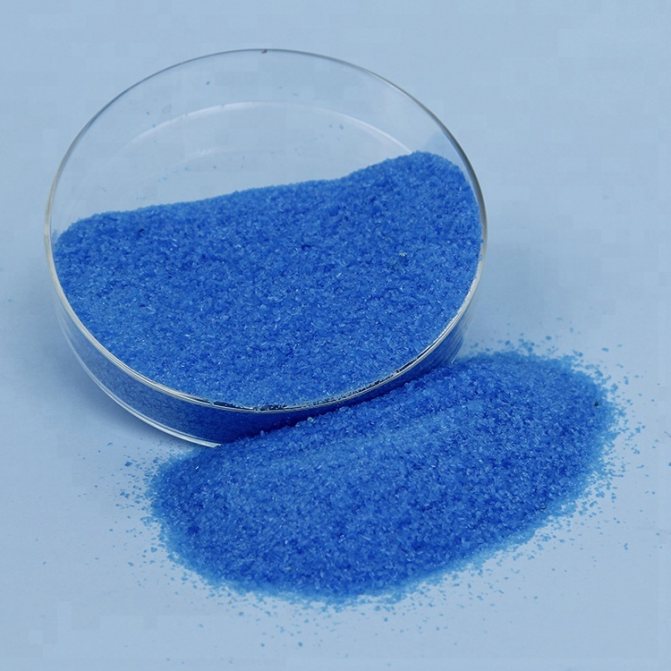

One of the most popular and well-known products. They effectively fight fungi and kill insect egg-laying, preventing them from developing and damaging the plant. Specialty stores sell substances individually or in mixtures. However, it is better to breed them in different containers, since they dissolve in different ways.
For effective use, you should strictly follow the instructions for use indicated on the packaging by the manufacturer. Substances create an acidic environment, killing all life on the surface of the soil and bush.
It should be remembered that urea is also a foliar nitrogen fertilizer that affects the quality of the crop. However, its use for these purposes entails a shift in the timing of flowering and fruiting. This should be considered before processing the plant in the spring.
Nitrafen
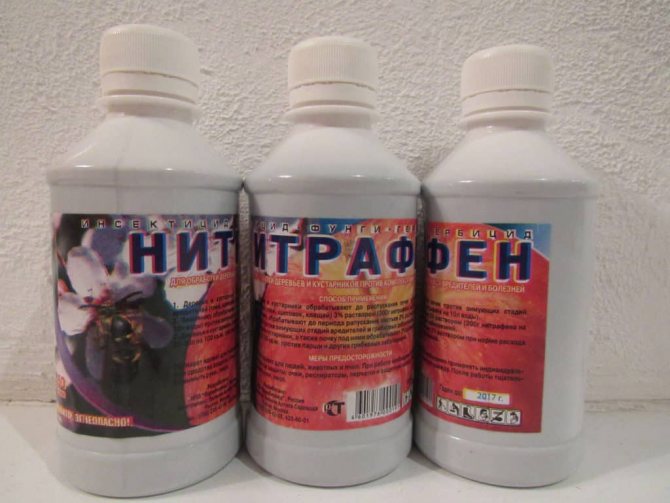

This substance was extremely popular in the era of the USSR, then it was banned on the territory of our country. Subsequently, it again began to appear on the shelves of specialized stores, but due to its toxicity and the appearance of many new, modern drugs, it lost its popularity.
However, its application still takes place today. For spraying, use a paste solution with clean warm water. The main thing is to remember about the toxicity of the substance and use it no more than once every 4 years.... This will enable it to decompose and not adversely affect the harvest.
Treatment of currants in the spring from pests often includes treatment with nitrophen. It kills ticks and insect clutches that hibernate on the surface of branches. The chemical is very strong, therefore it kills all living things. But at the same time it can have a harmful effect on human health.
Specimen for examination 30
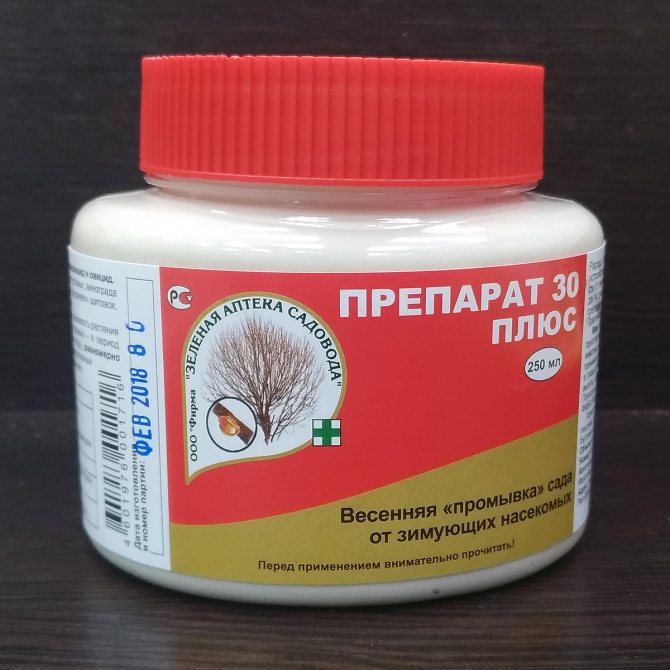

A gentle preparation that does not cause burns on the surface of plant branches and leaves. Its main action is to create an airtight film on the bushes. The fungus and insect embryos simply do not get the much-needed air under this film and suffocate. This distinguishes the chemical from the general range of chemicals that have a harmful effect on the plant.
Various additives are added to the mixture that actively affect pests. The preparation of the solution should be strictly according to the proportions and according to the manufacturer's instructions, which are prescribed on the package.
Bordeaux mixture
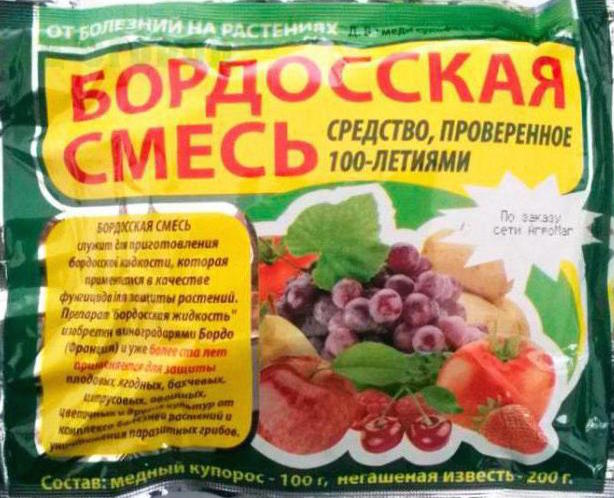

A very popular and highly demanded product today. It contains alkali and copper sulfate, which contribute to the elimination of diseases of the bush and negatively affect fungal infections.
Against insects, such a remedy is practically powerless. Before bud break, you can use a more concentrated mixture, with a strength of 3%. To keep the plant intact after the leaves bloom, use a weak solution with a strength of 1%.
How to process open leaves in spring?
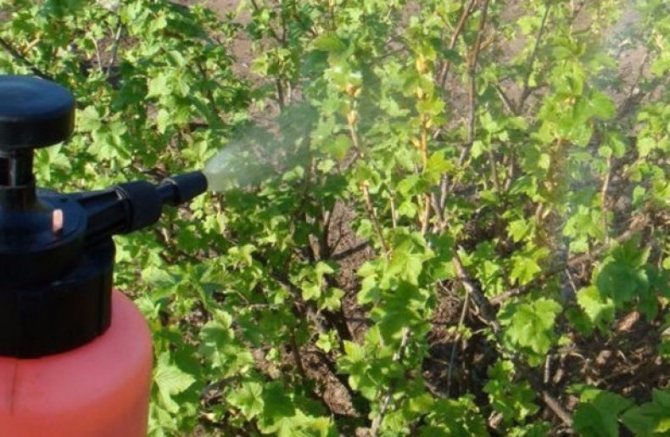

Spraying currant leaves in spring
It happens that the gardener does not have time to process the bushes in early spring due to employment or unsuitable weather conditions. And some gardeners prefer to carry out twins processing in order to reliably protect their crops from pests.
The fact is that insects and mites live not only on sprouts and branches, but also in the ground under the bush and around, as well as neighboring areas, fences and other objects. With the arrival of heat and leaf blooming, they will gladly come to fresh currant leaves and will parasitize.
That is why some gardeners prefer processing in late spring, when the leaves of the plant have blossomed and pests live on the bushes. In addition, this method has undoubted convenience. You don't have to work in frosty air, wading through the garden knee-deep in snow.
How to protect the future harvest?
There are many ways to protect currant bushes. For the prevention of diseases, fungicides are used, for pest control - insecticides. They can be chemically or biologically based. Affordable and safe folk remedies are very popular, although they are inferior in effectiveness to chemicals and biologicals.
Treatment with chemicals (Karbofos, Fufanon, copper sulfate, etc.)
Chemicals are highly effective, but quite toxic. When processing berry bushes in early spring, you can not be afraid of negative consequences, because by the time of fruiting they will have time to completely decompose. The use of chemicals requires special precautions. When working with them, you must use protective clothing, gloves and a mask. The neighboring plants are covered with foil.
Basic rules for drug processing
The manufacturer of a specific product will tell you how to properly process the bushes and the adjacent garden space. You can read about this on the packaging of the substance purchased before processing.
It is important to remember the basic principles of processing:
- the substance is diluted strictly according to the instructions specified by the manufacturer, in the required proportions;
- spraying can be done exclusively at positive air temperatures, at least + 4 ° C;
- it is necessary to moisten not only the leaves, branches and buds, but also all the supports and garters located nearby, as well as the soil around the bush and a nearby fence;
- if the disease is found on one bush, you need to process all available crops in the garden.
Pest control should be carried out twice with a break of a couple of weeks. This is due to the different release of insects and fungi on the leaves of the plant and their activation.
Chemical agents infect the first generation of pests in the first treatment and ply along the internal structure of the plant for another 1-3 weeks, killing all insects and fungi. After that, the plant needs additional feeding with poisons in order to kill subsequent colonies of insects that may appear from untreated neighboring areas.
Processing during fruiting
Processing in the summer during flowering and berry formation is carried out to combat existing ailments. Chemicals should be used with caution and only when absolutely necessary. It is better to use traditional methods or biological products.
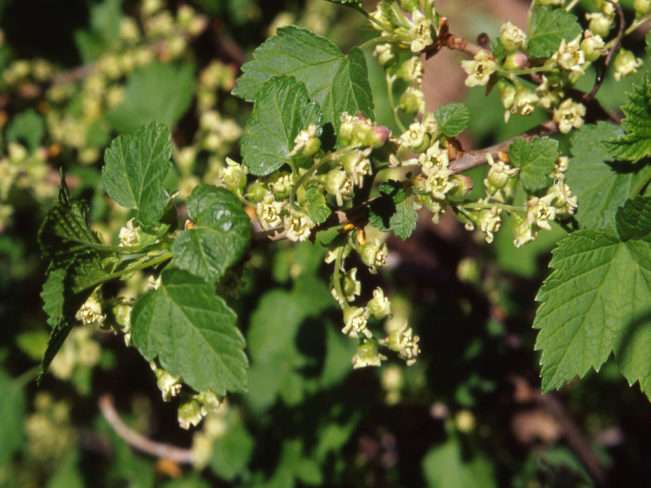

Effective remedies are as follows:
- Citrus infusion... The tool is insisted for 5 days on the peel of lemon, orange and others, in a proportion of 1 kg per 10 liters. Helps with aphids, scale insects and mealybugs.
- Garlic decoction... You need to prepare the product within a week in a proportion of 200 g per 4 liters. Helps against whitefly, ticks.
- Onion husk and pulp tincture... Cook 1 day warm. Helps against aphids, mites and fungi.
- Infusion of tobacco... 1 kg of leaves, dust and stems are brewed in 10 liters for 24 hours. Helps with aphids and ticks.
- A decoction of marigold flowers... Brew 1 kg of dry raw materials in a liter of boiling water, leave for 48 hours. Removes ticks, aphids, fungi and whitefly. In general, marigolds are a useful culture in this regard. You can read about the beneficial properties of marigolds by clicking on the link.
- Water soda solution in a proportion of 4 tablespoons per 10 liters. Destroys powdery mildew and various types of mushrooms.
- Ash tincture, which is cooked for 4 days. Kills powdery mildew.
- Mullein solution with a proportion of 1 liter to 3-4 liters. Insist 3 days. Destroys powdery mildew.
You can spray it weekly.

